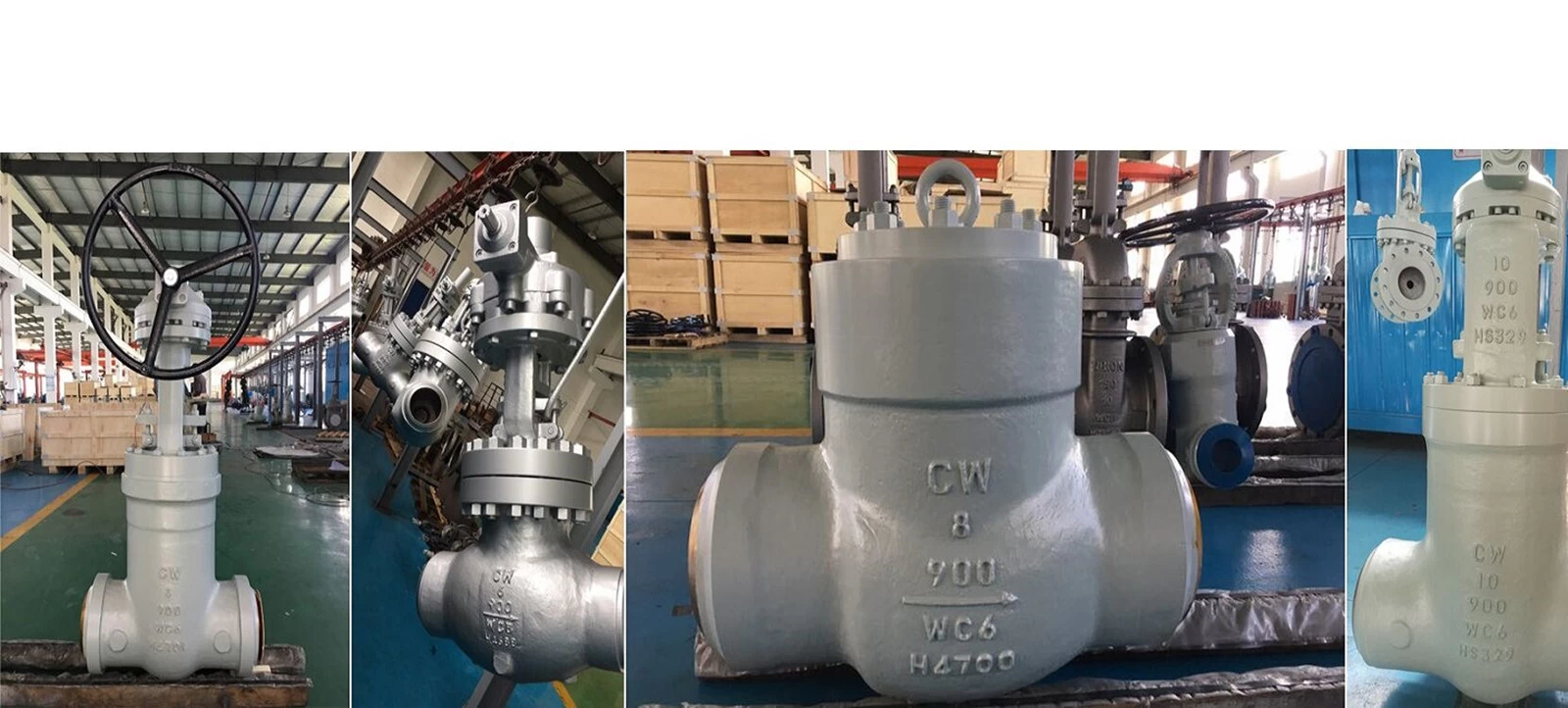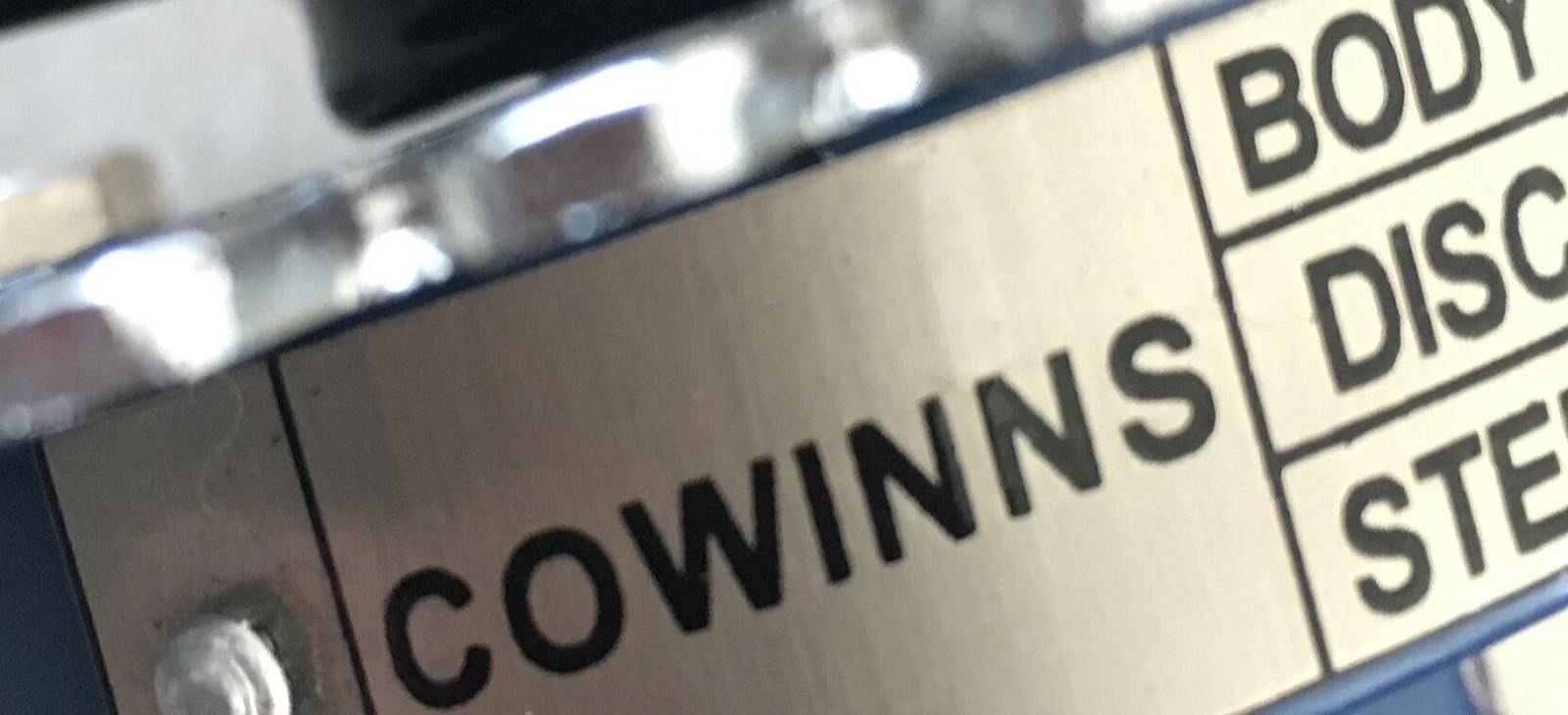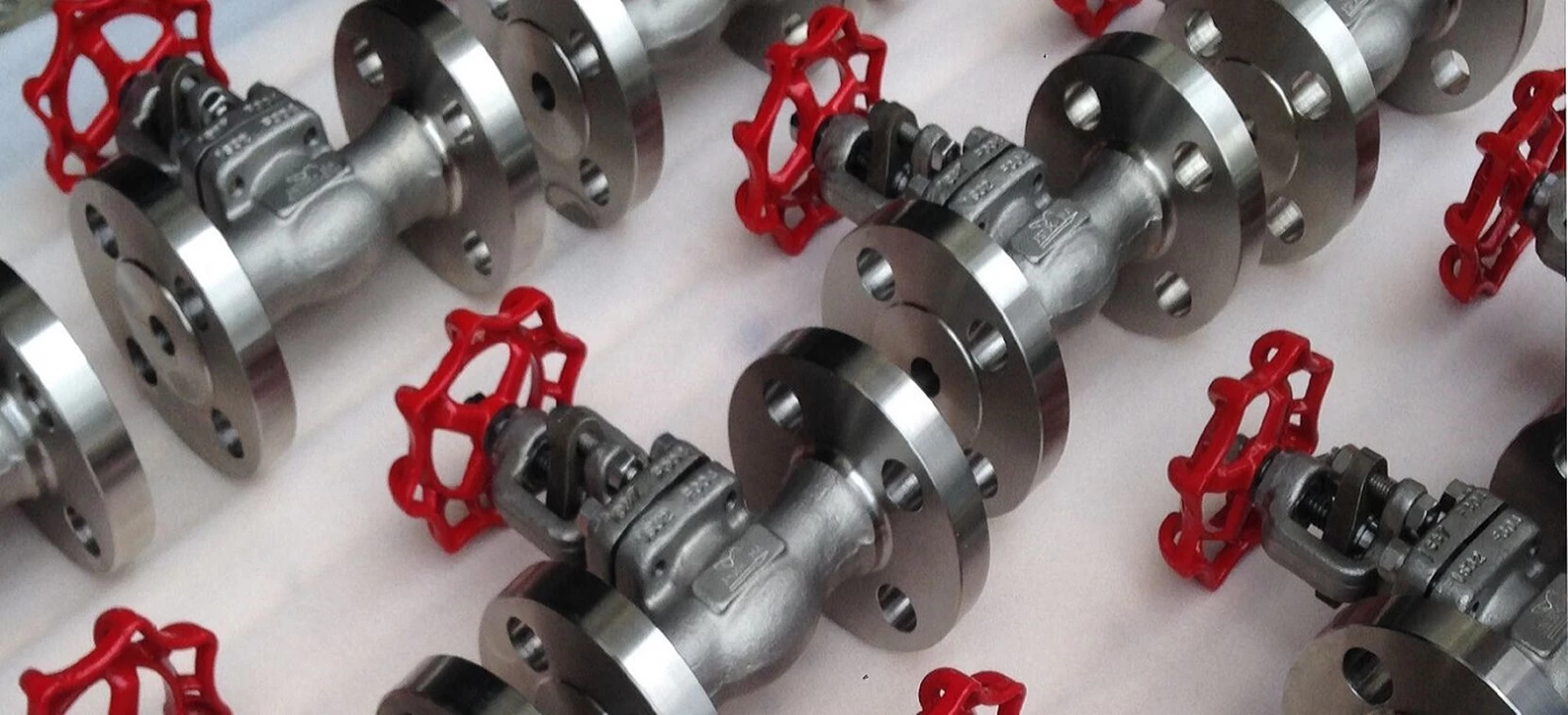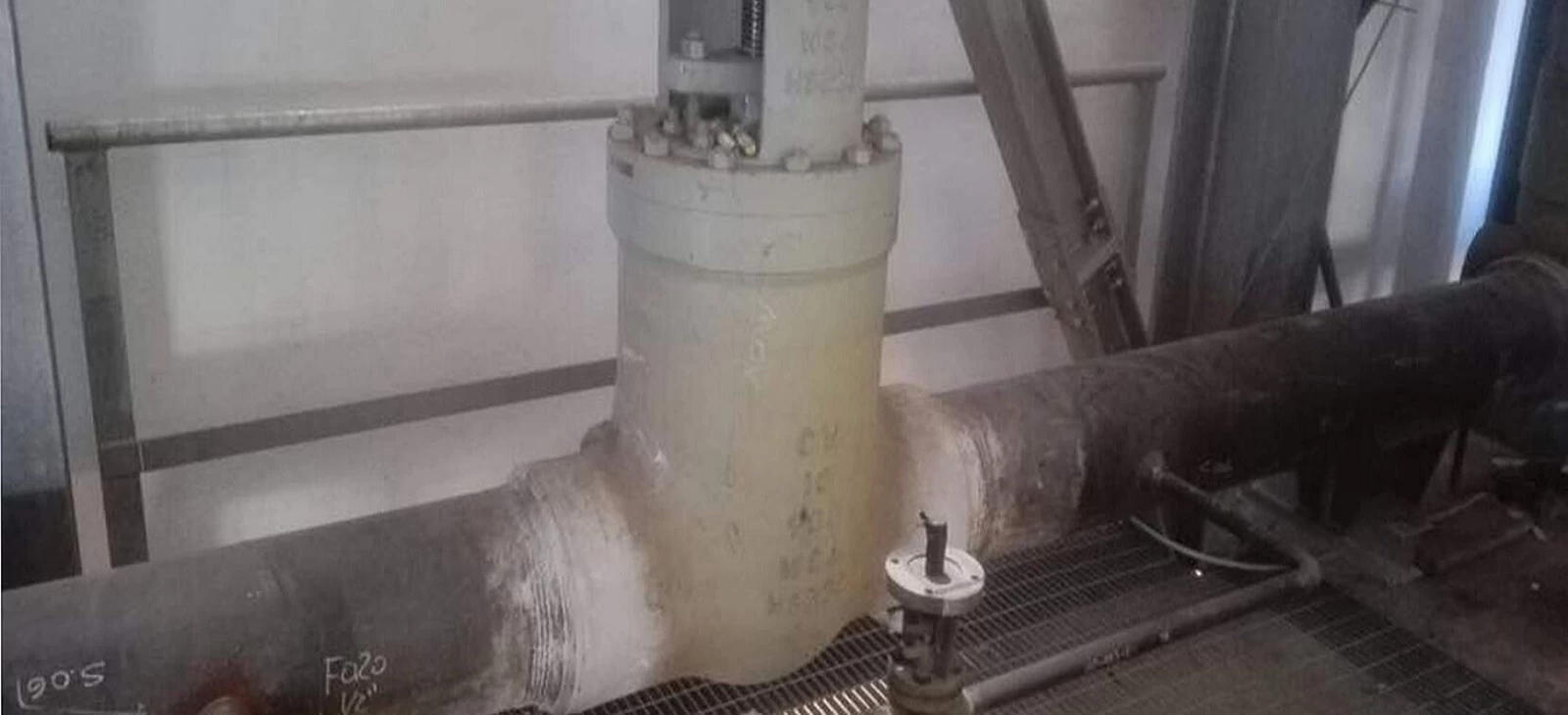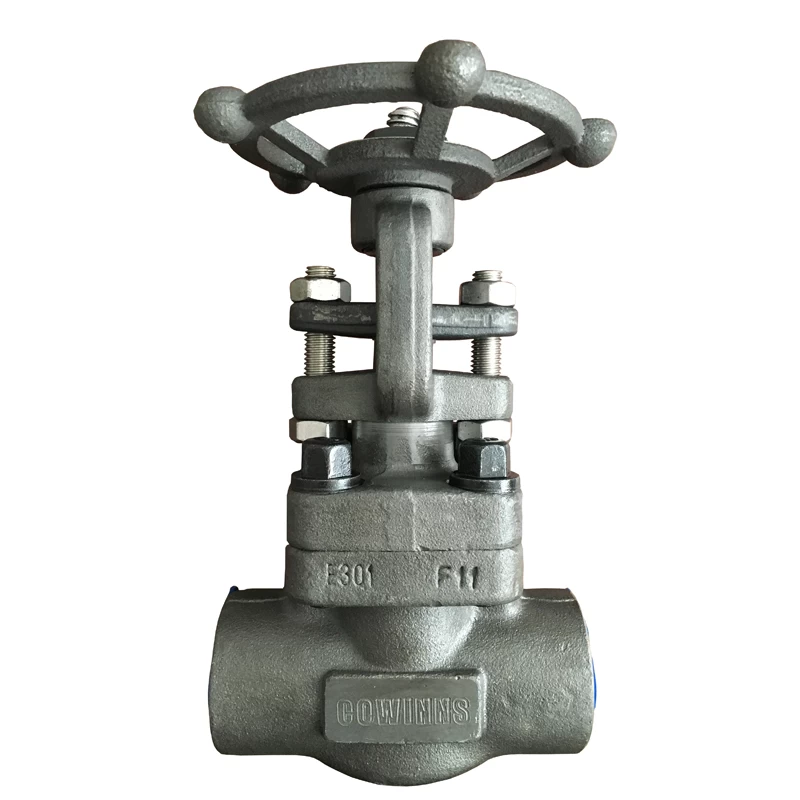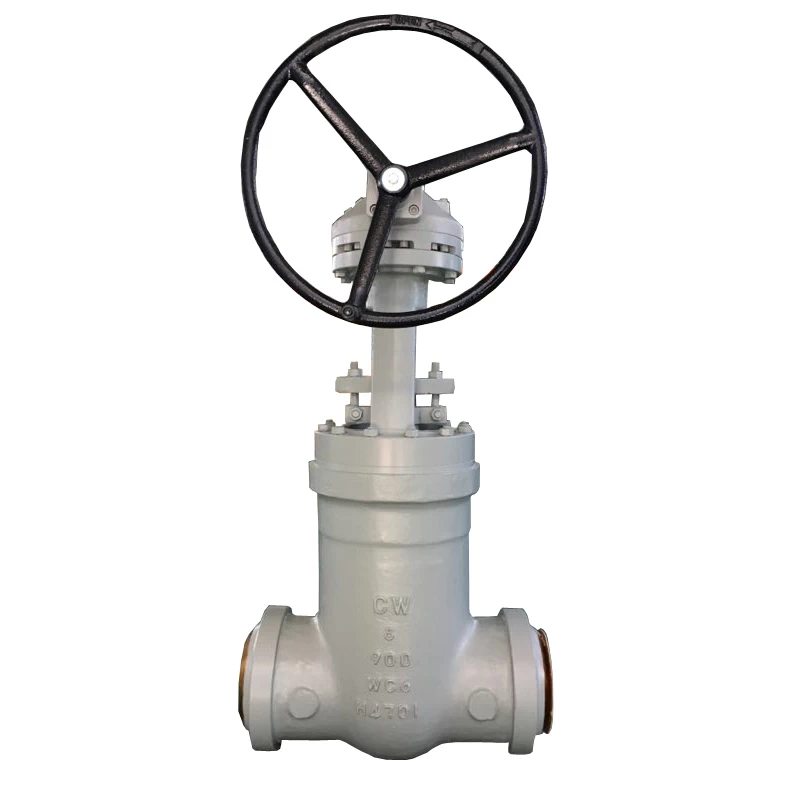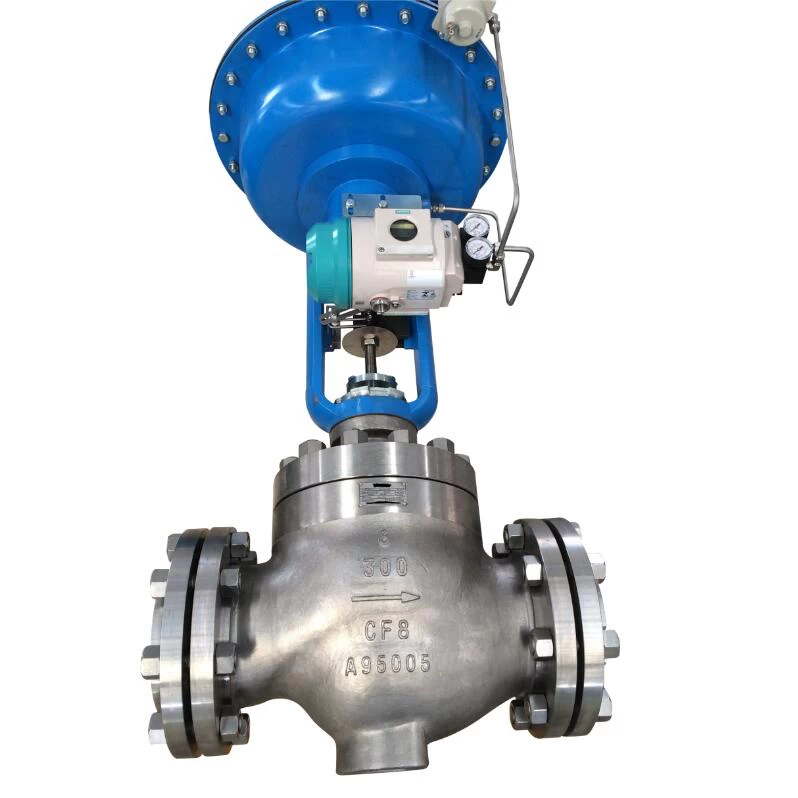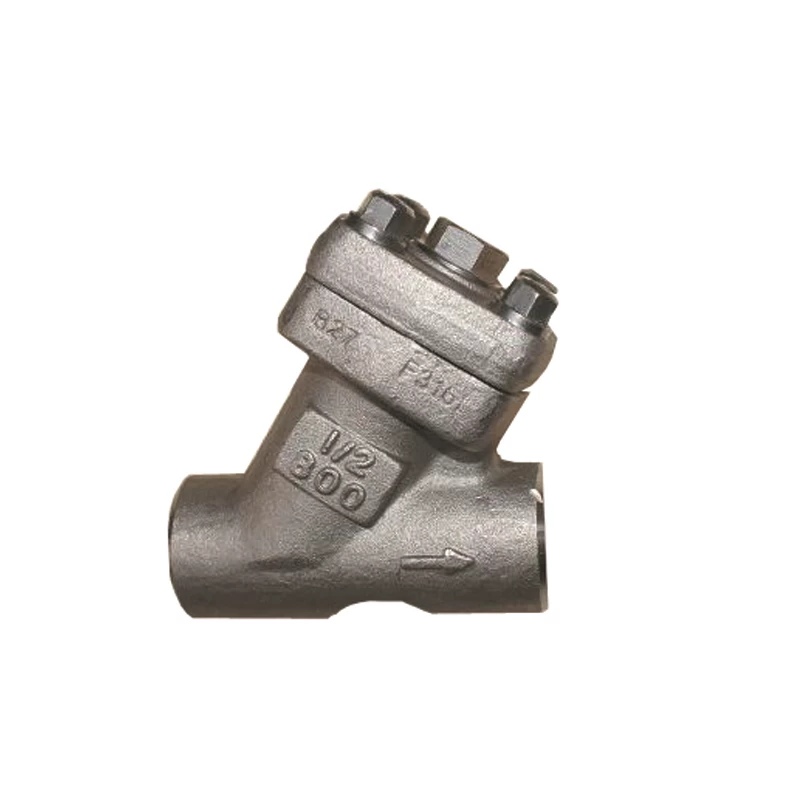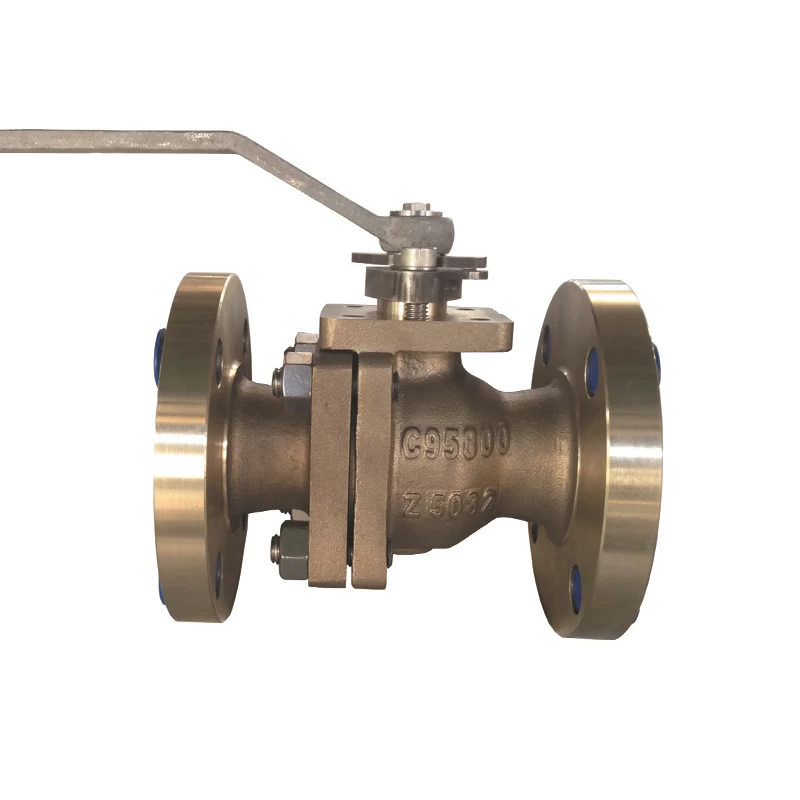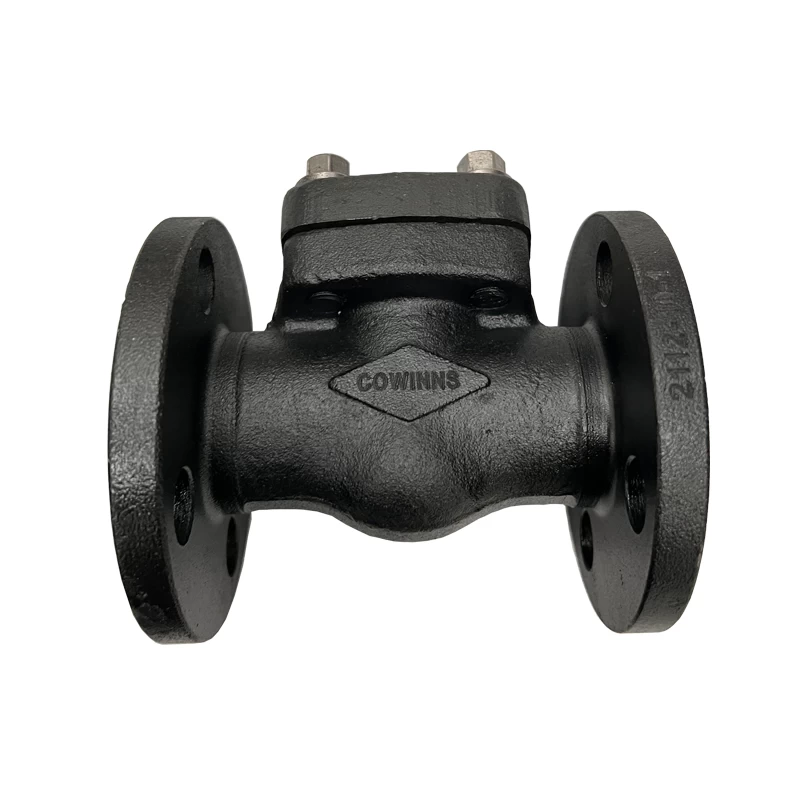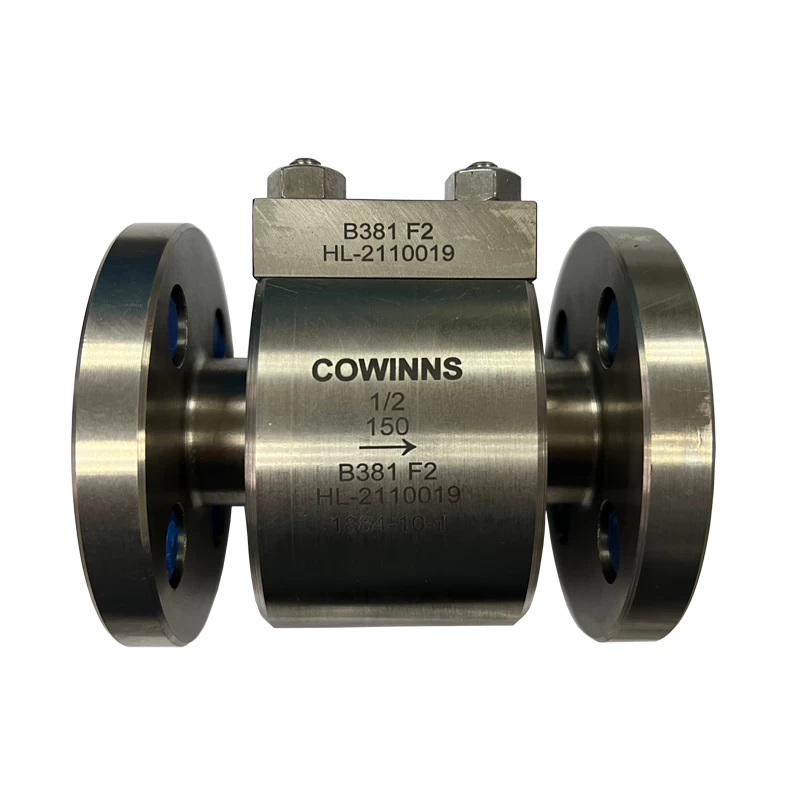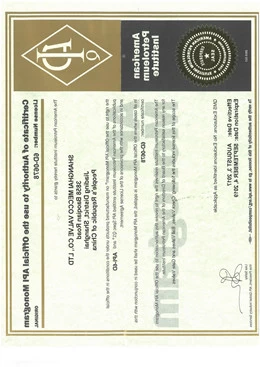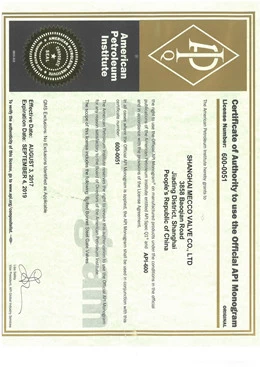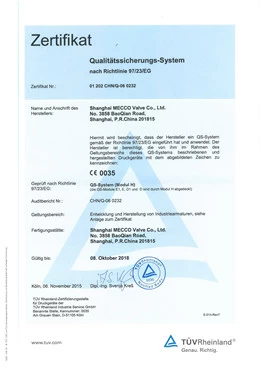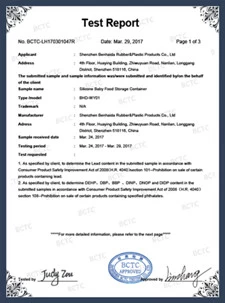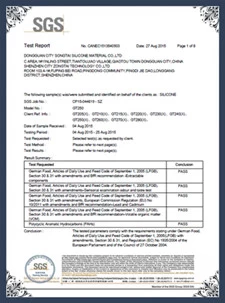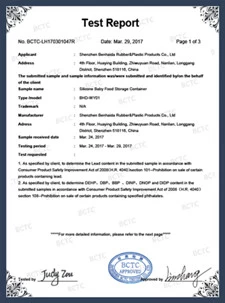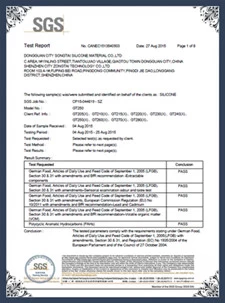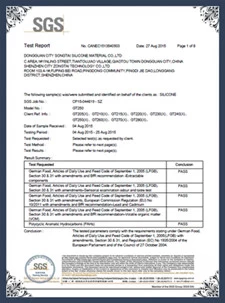Valve Forging Knowledge (Part 1)
Valve Forging Knowledge (Part 1)
Casting and forging are two distinct manufacturing processes.
Casting involves transforming molten, shapeless metal into solid components with defined shapes. A cast valve is produced by pouring metal into a mold to form the valve body.
Forging, on the other hand, is primarily performed at high temperatures through compression and shaping. This process refines the grain structure of the metal. A forged valve is formed by hammering or pressing the material into the desired shape.
Cowinns as one of China titanium gate valve manufacturer ,we can design and manufacture the forged titanium gate valves.
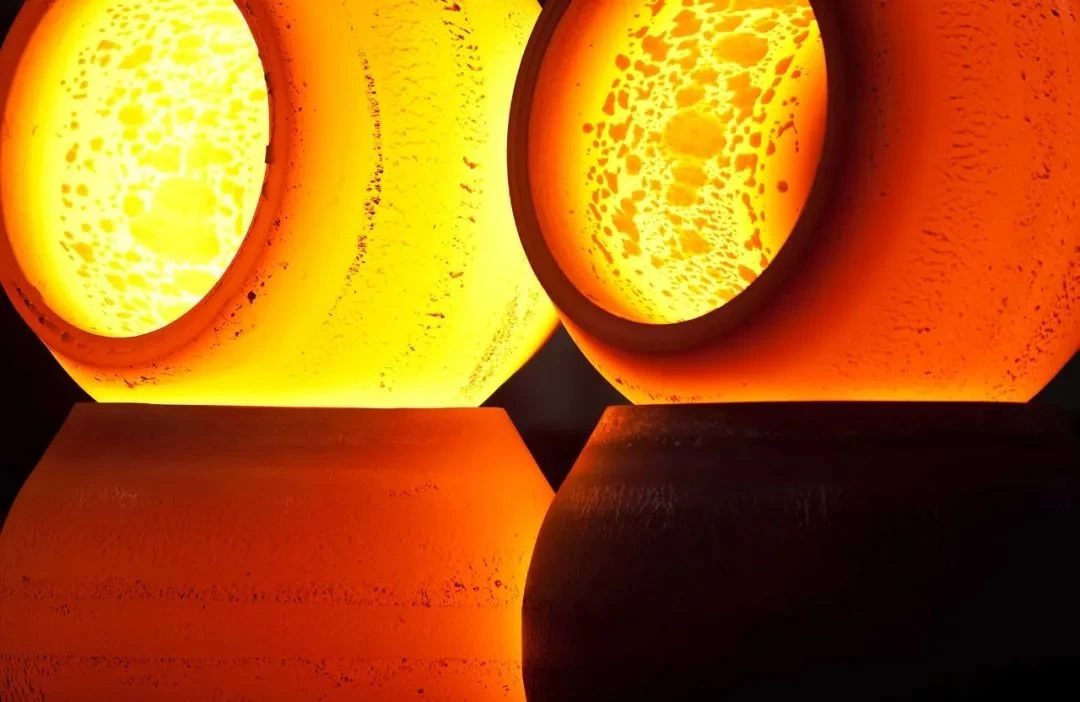
Types of Forging
(1) Classification by Deformation Temperature
When the temperature exceeds 300–400°C (the blue brittleness range of steel) and reaches 700–800°C, the material's deformation resistance drops sharply, and its formability significantly improves. Depending on the temperature range during forging and the quality and process requirements of the forged parts, forging can be classified into cold forging, warm forging, and hot forging.
The initial recrystallization temperature of steel is approximately 727°C, but 800°C is commonly used as a practical dividing line:
Forging above 800°C is considered hot forging;
Forging between 300°C and 800°C is called warm forging or semi-hot forging;
Forging at room temperature without heating is known as cold forging.
At lower temperatures, the dimensional change of forged parts is minimal. Forging below 700°C generates less scale and avoids surface decarburization. Therefore, as long as the forming energy is within allowable limits, cold forging can achieve excellent dimensional accuracy and surface finish. Warm forging under 700°C can also produce high precision parts if temperature and lubrication/cooling are well controlled.
Hot forging, with its low forming energy and deformation resistance, is suitable for producing large, complex-shaped forgings. For high-precision hot forgings, the process is typically conducted at 900–1000°C. However, attention must be paid to improving the working environment of hot forging. Die life in hot forging (2,000–5,000 pieces) is generally shorter than that in warm forging (10,000–20,000) or cold forging (20,000–50,000), but hot forging allows greater flexibility and lower costs.
Cold forging induces plastic deformation and work hardening, placing high loads on forging dies. Therefore, high-strength dies and hard lubricating films are required to prevent wear and sticking. To prevent cracking of the workpiece, intermediate annealing may be necessary to restore deformability. Phosphate coating is commonly applied to maintain effective lubrication. In continuous processing using bar or coil stock, cross-sectional lubrication is currently not feasible, and research is ongoing on the applicability of phosphate-based lubricants.
(2) Classification by Material Movement
According to the movement of the billet during forging, the process can be divided into the following types: open-die forging (free forging), upsetting, extrusion, die forging, closed-die forging, and closed-upsetting.
1. Open-Die Forging (Free Forging)
Definition: A method of forging in which the metal undergoes deformation under repeated impact or pressure between flat or simple-shaped dies, allowing it to flow freely in all directions to form the desired shape and mechanical properties. It is commonly referred to as free forging.
Characteristics: Open-die forging requires simple tools and equipment, offering good versatility and low cost. Compared to cast blanks, open-die forging eliminates internal defects such as shrinkage cavities, porosity, and inclusions, resulting in superior mechanical properties. The process is suitable for producing simple shapes and is particularly important in the manufacturing of large and critical components in heavy machinery.
Types: Open-die forging includes manual forging and machine forging. Manual forging is low in efficiency and high in labor intensity, typically used for repairs or small-batch, small-size forgings. In modern industrial production, machine forging has become the primary method and is especially vital in heavy machinery manufacturing. The shape and accuracy of the final product largely depend on the operator’s skill.
Main Equipment: Equipment used in open-die forging includes forging hammers and hydraulic presses. Forging hammers include air hammers and steam-air hammers. Some facilities also use simpler, more economical equipment such as spring hammers, board hammers, lever hammers, and wire hammers. Hydraulic presses use static pressure from fluid to deform the billet and are the only suitable method for producing large forgings.
Basic Operations: Open-die forging involves operations such as upsetting, drawing out, punching, bending, twisting, offsetting, cutting, and forge welding.
2. Die Forging
Definition: Die forging refers to the process of shaping a heated billet using a die on specialized forging equipment to form precision-shaped forgings. This method produces components with high dimensional accuracy, minimal machining allowance, and complex geometries, making it highly productive.
Characteristics: Die forging uses dies mounted on forging hammers or presses to deform metal billets. It is characterized by high efficiency, reduced labor intensity, precise dimensions, small machining allowance, and the ability to form complex parts. It is suitable for mass production. However, it requires special forging equipment and high-cost dies, making it less suitable for small-batch or single-piece production.
Types: Based on the equipment used, die forging can be classified into:
Hammer die forging
Crank press die forging
Flat die forging
Friction press die forging, etc.
Die Construction: Die forging uses upper and lower die blocks to form a mold cavity, which is the working part of the die. The cavity is split between the upper and lower dies. Dies are mounted using dovetail and wedge mechanisms (parts 1 and 2) on the hammer anvil and workbench, guided by locking mechanisms (part 3) or guide posts to prevent misalignment. The billet deforms according to the cavity shape.
Process Steps: The die forging process typically includes blank preparation, pre-forging, and final forging. The final die cavity is designed according to the dimensions, shape, and required tolerances of the finished forging.
(3) Classification by Die Movement
According to the movement mode of the forging dies, forging processes can be classified into rotary swaging, orbital forging, roll forging, wedge cross rolling, ring rolling, and skew rolling. Processes such as rotary swaging, orbital forging, and ring rolling can also be applied in precision forging. To improve material utilization, roll forging and cross rolling are often used as preforming processes for elongated materials. Similar to open-die forging, rotary forging is also a type of local forming, and one of its advantages is that forging can be achieved with relatively small forces compared to the size of the forged part. However, as with open-die forging, the material tends to expand from the die surface toward the free surface, making it difficult to maintain dimensional accuracy. By computer-controlling the movement direction of the dies and the rotary forging process, it becomes possible to produce complex-shaped, high-precision parts with lower forging forces—for example, various large-sized turbine blades.
The movement pattern and degrees of freedom of forging dies vary by equipment. Based on how deformation is restricted at the bottom dead center, forging equipment can be divided into four types:
Force-limited forging: Hydraulic presses where the ram is directly driven by hydraulic pressure.
Quasi-stroke-limited forging: Hydraulic presses that drive crank and linkage mechanisms.
Stroke-limited forging: Mechanical presses driven by crank, linkage, and wedge mechanisms.
Energy-limited forging: Screw presses and friction presses using screw mechanisms.
To achieve high precision, it is essential to prevent overload at the bottom dead center, and to control speed and die positioning. These factors directly affect the tolerance, shape accuracy, and die life. Additionally, in order to maintain accuracy, it is necessary to adjust the ram guide clearance, ensure rigidity, fine-tune the bottom dead center, and use auxiliary transmission mechanisms.
Moreover, according to the direction of the ram motion, forging machines can be classified as having vertical or horizontal motion (the latter being suitable for forging long parts, parts requiring lubrication and cooling, and high-speed production). Using compensation devices can add movement in other directions. Each forging mode differs in terms of required forging force, processes, material utilization, productivity, dimensional tolerance, and lubrication/cooling methods—these factors also influence the degree of automation.
Importance of Forging
Forging is one of the primary methods for producing mechanical part blanks in the machinery manufacturing industry. It not only imparts the desired shape to parts but also improves the internal structure of metals, enhancing both mechanical and physical properties. Most critical components that require high strength and reliability are manufactured through forging. Examples include turbine generator shafts, rotors, impellers, blades, retaining rings, large hydraulic press columns, high-pressure cylinders, rolling mill rolls, internal combustion engine crankshafts, connecting rods, gears, bearings, and essential components in the defense industry such as artillery barrels.
As such, forging is widely applied across industries including metallurgy, mining, automotive, tractors, agricultural machinery, petroleum, chemical, aerospace, aviation, and weapons manufacturing. Even in daily life, forging plays an important role. To some extent, the annual output of forgings, the proportion of die forgings in total forging output, the size and quantity of forging equipment, all serve as indicators of a country’s industrial capability.
Forging Materials
Materials used in forging are mainly various grades of carbon steels and alloy steels, followed by aluminum, magnesium, copper, titanium, and their alloys. The material may start as bar stock, ingots, metal powders, or liquid metal. The forging ratio, which is the ratio of the cross-sectional area before deformation to that after deformation, is a key indicator. Proper selection of forging ratio, heating temperature and soaking time, initial and final forging temperatures, deformation amount, and deformation speed is essential for improving product quality and reducing costs.
Small- and medium-sized forgings are typically made from round or square bar stock. Bar stock features uniform grain structure, good mechanical properties, accurate shape and dimensions, and high surface quality, making it ideal for mass production. As long as the heating temperature and deformation conditions are properly controlled, excellent forgings can be produced with relatively low deformation.
Ingots are generally used for large forgings. Because ingots have as-cast structures with coarse columnar grains and central porosity, they require significant plastic deformation to refine the grain structure and consolidate internal voids in order to achieve desirable mechanical properties.
Powder metallurgy preforms—compacted and sintered—can be forged using flashless die forging under hot conditions to produce powder forgings. These parts exhibit density close to that of conventional forgings and possess good mechanical properties. High precision also allows reduced machining requirements. Powder forgings have uniform internal structures and no segregation, making them suitable for small gears and similar parts. However, the cost of metal powders is much higher than that of ordinary bar stock, limiting their widespread use.
In liquid metal forging, liquid metal is poured into a die cavity and solidified under static pressure. Under pressure, it undergoes crystallization, flow, plastic deformation, and final forming, resulting in die forgings with the desired shape and performance. Liquid metal forging is a process that lies between die casting and conventional die forging and is especially suited for producing complex, thin-walled components that are difficult to forge with traditional methods.
In addition to common forging materials like carbon and alloy steels, forging and rolling are also used for deformation superalloys such as iron-based, nickel-based, and cobalt-based alloys. However, these alloys have relatively narrow plastic ranges, making forging more difficult. For such materials, heating temperature, initial forging temperature, and final forging temperature must be strictly controlled.
 +86 512 68781993
+86 512 68781993 
